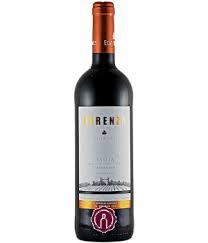Review of Elvi Herenza Rioja Reserva 2009 and a look at the Martini.
By Joshua E. London and Lou Marmon
Washington Jewish Week April 2015

Truffles are customarily much smaller. The extremely aromatic and highly valued white variety is found predominantly in Italy's Piedmont region. The black truffle, by contrast, tends to have a bit more mushroom character and usually costs about half as much as a white one. Black truffles are most famously found in France's Périgord region. Less flavorful but more widely available, and far cheaper, are the summer and Burgundy truffles which lack much of the aromatics of their white and black cousins.
Truffles are found in many other regions including China, Oregon and in Israel's Negev where the Desert truffle is harvested during the spring by Bedouin. In the upper Galilee scientists are attempting to cultivate both the desert and black varieties to make Israel another source of these rare delicacies. And they are utilizing an "electronic nose" to replace the traditional animal-dogs or pigs-that are more traditionally used to detect truffles deep underground.
Although the desert truffle is a Middle Eastern delicacy, it is more common to find truffles as the principle component of an Italian or French dish.
Wine-wise, while there are any number of wines that would pair nicely with truffled dishes, such as Burgundy and Barolo, we've settled instead for a nice Spanish red. Such as the kosher Elvi Herenza Rioja Reserva 2009 ($67; non-mevushal), a serious but elegant wine with expressive earthy aromas and flavors intermingled with dark plum, red cherry, licorice and herb notes with firm tannins and a vanilla accented finish.
Spirits-wise, now that the warm weather is finally here, our thoughts have gone in a classic, cooling and refreshing direction: the Martini.
Like so many of the best classic cocktails, the exact origins of the martini are obscure and hotly debated. Of course, what ultimately continues to sustain interest in the martini is the drink itself, not its pedigree. A simple yet sublime concoction of gin and dry vermouth, perhaps with some bitters and either a lemon twist or green olives. But not everyone is into so traditional a formula. As everyone knows, for example, in the movies James Bond preferred a vodka martini: " Shaken, not stirred."
As in most things, connoisseurs have very definite, often tediously pedantic, ideas about every aspect of every nuance of their martinis. Like whether it should be shaken or stirred, served with bitters or without, garnished with a twist of lemon, a couple of olives or nothing at all - not to mention the more fundamental question of gin versus vodka, and to what ratio it should be mixed with vermouth. Whatever. In matters of taste, the only opinion that counts is your own - or maybe, whoever is paying for your drinks. Our preferred basic martini recipe follows:
The Martini: Pour 2 ½ ounces of dry gin (any decent quality London Dry Gin will do, such as Bombay, Tanqueray, Miller's, etc., depending on your taste) into a cocktail mixer filled with hard, cracked ice, add a ½ ounce of dry vermouth, stir quickly with a long cocktail spoon until everything is super cold, then strain into a pre-chilled cocktail glass and serve. Garnish with a twist of lemon zest or anywhere from one to three green olives. Drink and repeat until you get nicely mellow. L'Chaim!
